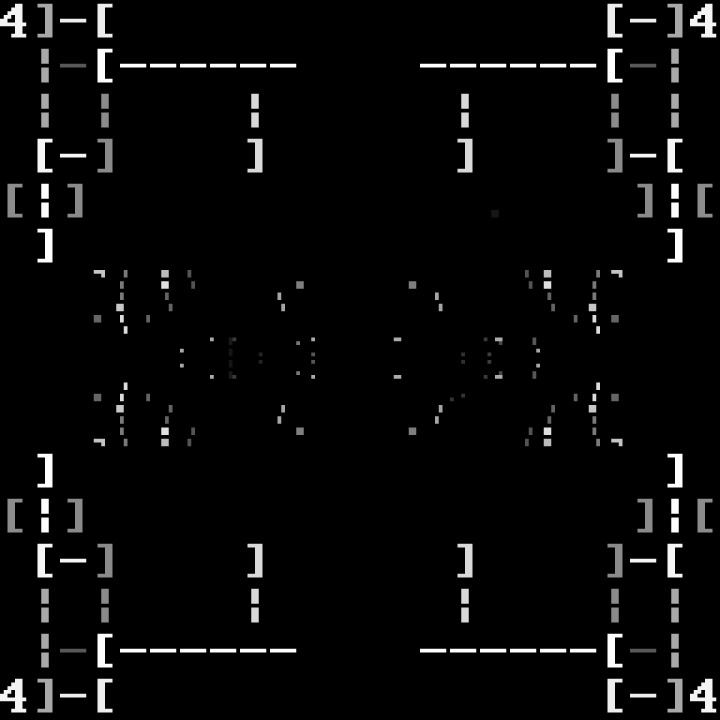
Series #4 – Glitchbox – Token #171
Custom audiovisual software, sculpture with LED panels, hand-cast iron, and electrical components, 2021/2025
Courtesy of the artist
A glitch represents a moment when the underlying structure of data, compression, rendering, or computation becomes visible through malfunction or failure. Glitchbox originally appeared as a series of generative audiovisual non-fungible tokens (NFTs) that could be customized by collectors. By changing the generative model’s parameters, the collector could alter the look and sound of the piece.
For this exhibition, Tyler de Witt (a.k.a. 0xDEAFBEEF) has created a custom interactive Glitchbox sculpture. Drawing on his skills as a blacksmith, computer programmer, and electrical engineer, he gives his digital instrument a tactile, physical form resembling a modular synthesizer. Although the ancient craft of blacksmithing may seem far removed from computer programming, de Witt finds many parallels between the two. For him, both code and iron represent “malleable, homogenous materials” that can be molded and shaped into any number of forms. Both can be used to create tools that can, in turn, create other objects.
The artist invites you to explore the work’s knobs, buttons, and levers like you would a musical instrument you are learning to play. How do the changes you make affect the audio and visuals?
A subfield of artificial intelligence that uses generative models trained on large data sets to create new content—text, images, music, or videos—by mimicking the underlying structures, patterns, and styles of what it was trained on. Popular commercial generative AI tools like ChatGPT, Dall-E, and Midjourney use a chatbot feature where users can prompt the AI system using natural language rather than code. These large-scale systems are trained using trillions of data points collected from the internet and are controversial for the way they appropriate (and imitate) existing intellectual property and for their energy usage and environmental impact.
A unique digital certificate stored on a blockchain that proves ownership of a specific digital asset like artwork, music, or videos. An NFT works like a contract of ownership, recording data like sales and trading information. Unlike cryptocurrencies, each NFT is non-fungible, meaning it’s one-of-a-kind and cannot be exchanged equally with another, making it ideal for digital collectibles.